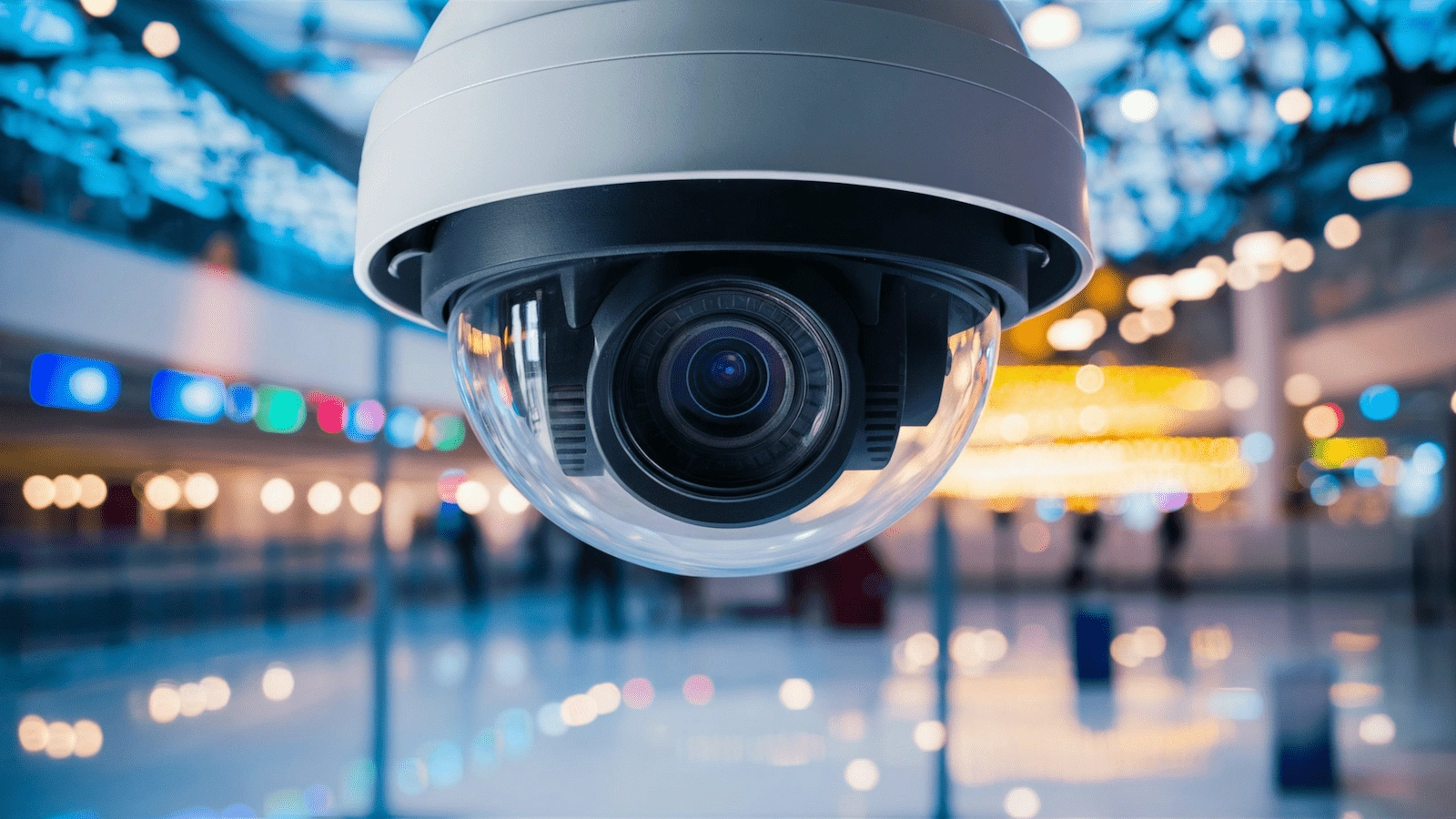
As security threats become increasingly sophisticated, businesses must take a more strategic approach to surveillance, one that aligns with the specific risks and operational needs of each environment. Just as important as selecting the right type of CCTV cameras is deciding between wired and wireless systems, with each offering distinct advantages.
Wired systems are often preferred for their stability, consistent power supply, and immunity to wireless interference, making them ideal for high-security areas or large-scale facilities. On the other hand, wireless systems provide unmatched flexibility and ease of installation. Here’s a look at the pros and cons of each type of CCTVs.
Advantages of Using Wired Security Cameras
Reliability and Performance
Wired security cameras offer consistent uptime and stable connections, making them well-suited for continuous 24/7 monitoring. Because they are not subject to wireless interference or bandwidth constraints, wired systems typically provide a more dependable video feed.
Image Quality
Wired cameras can support higher bitrates and resolutions without compression artifacts, delivering superior image clarity. This makes them ideal for scenarios requiring detailed footage, such as facial recognition or licence plate capture.
Security
A wired network delivers enhanced cybersecurity and stronger data integrity than wireless systems. With no reliance on Wi-Fi, wired cameras are less susceptible to hacking, signal jamming, or network interference. Furthermore, their physical cabling, particularly when concealed, makes them highly resilient against unauthorised tampering, ensuring dependable protection in critical environments.
Installation and Maintenance
Power over Ethernet (PoE) enhances wired cameras by simplifying installation — delivering both power and data through a single cable — and eliminating the need for separate electrical wiring. It ensures a stable power supply, supports high-bandwidth video transmission, and enables remote camera management, including diagnostics, reboots, and firmware updates. This makes PoE ideal for businesses seeking reliable, high-performance surveillance with centralised control.
Limitations of Wired Security Cameras
Complex Installation in Existing Buildings
Running cables through walls, ceilings, or long distances can be labour-intensive, disruptive, and costly—especially in finished or multi-storey buildings.
Limited Flexibility in Placement
Camera placement is constrained by the availability of Ethernet ports and the reach of the cabling, making it harder to reposition or expand without additional wiring work.
Higher Initial Setup Cost
Although more reliable long-term, the upfront costs for equipment (PoE switches, cabling, installation labour) can be significantly higher than wireless systems.
Not Ideal for Temporary Setups
Wired cameras are better suited for permanent installations. For temporary events or evolving layouts, they lack the portability and convenience of wireless solutions.
Vulnerability to Cable Damage
If a cable is cut or damaged— whether accidentally or maliciously —the camera will lose both power and connectivity.
Advantages of Using Wireless Security Cameras
Flexibility and Ease of Installation
Wireless cameras are generally easier and quicker to install, as they do not require extensive cabling. This makes them suitable for temporary setups or locations where running cables is impractical or costly.
Placement Options
The absence of physical wiring offers greater flexibility in camera placement. Wireless systems are particularly useful in areas with architectural constraints or outdoor environments where cable routing is difficult.
Temporary and Rental-Friendly
Wireless security cameras are especially well-suited for temporary installations and rental properties where permanent alterations, such as drilling or extensive cabling, are restricted. Their non-invasive setup allows tenants and event organisers to implement effective surveillance without breaching tenancy agreements or damaging property infrastructure.
Scalability
Wireless systems are inherently scalable, making them a flexible option for growing security needs. Whether expanding coverage across additional rooms, floors, or outbuildings, users can easily add more cameras to the network without the hassle of rewiring or upgrading infrastructure.
Encrypted Data Transmission
To counter potential cybersecurity threats, most modern wireless security cameras employ strong encryption protocols — such as WPA2 or WPA3 —for data transmission. This ensures that video feeds and user credentials are securely protected from interception or unauthorised access.
Limitations of Wireless Security Cameras
Potential Interference and Bandwidth Challenges
Wireless cameras rely on Wi-Fi or other wireless protocols, which can be susceptible to interference from other devices or environmental factors. This may affect video quality or connectivity, especially in congested network environments.
Power and Battery Life
While battery-powered and solar options offer flexible installation, they also introduce maintenance concerns. Batteries need regular recharging or replacement, and solar panels require consistent sunlight to remain effective. In high-traffic or critical surveillance areas, this can lead to downtime if power runs out unexpectedly, making these systems less reliable than continuously powered wired alternatives.
Vulnerability to Hacking if Poorly Secured
Although many wireless CCTV cameras come with encryption, improper configured systems can be vulnerable to hacking. Weak passwords, outdated firmware, or unsecured networks can expose live feeds or stored footage to unauthorised access, raising serious privacy and security concerns.
Latency in Real-Time Monitoring
Compared to wired systems, wireless cameras can exhibit slight delays in transmitting live video feeds due to data processing and network transmission time. While often negligible, this latency can pose issues in environments where immediate real-time response is crucial, such as in retail security or live incident monitoring.
Making the Right Choice for Your Business
Choosing between wired and wireless security cameras depends on your specific operational needs, infrastructure, and budget considerations. Wired systems tend to excel in reliability, image quality, and scalability, making them suitable for enterprise environments requiring robust, continuous surveillance. Conversely, wireless cameras offer installation flexibility and rapid deployment, fitting smaller-scale or temporary applications. Get in touch with a Canon consultant and find the solution that best supports your security objectives and long-term investment goals.

Take The Steps Forward
Let's work together and uncover digital opportunities starting today.


